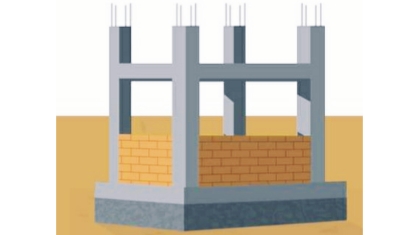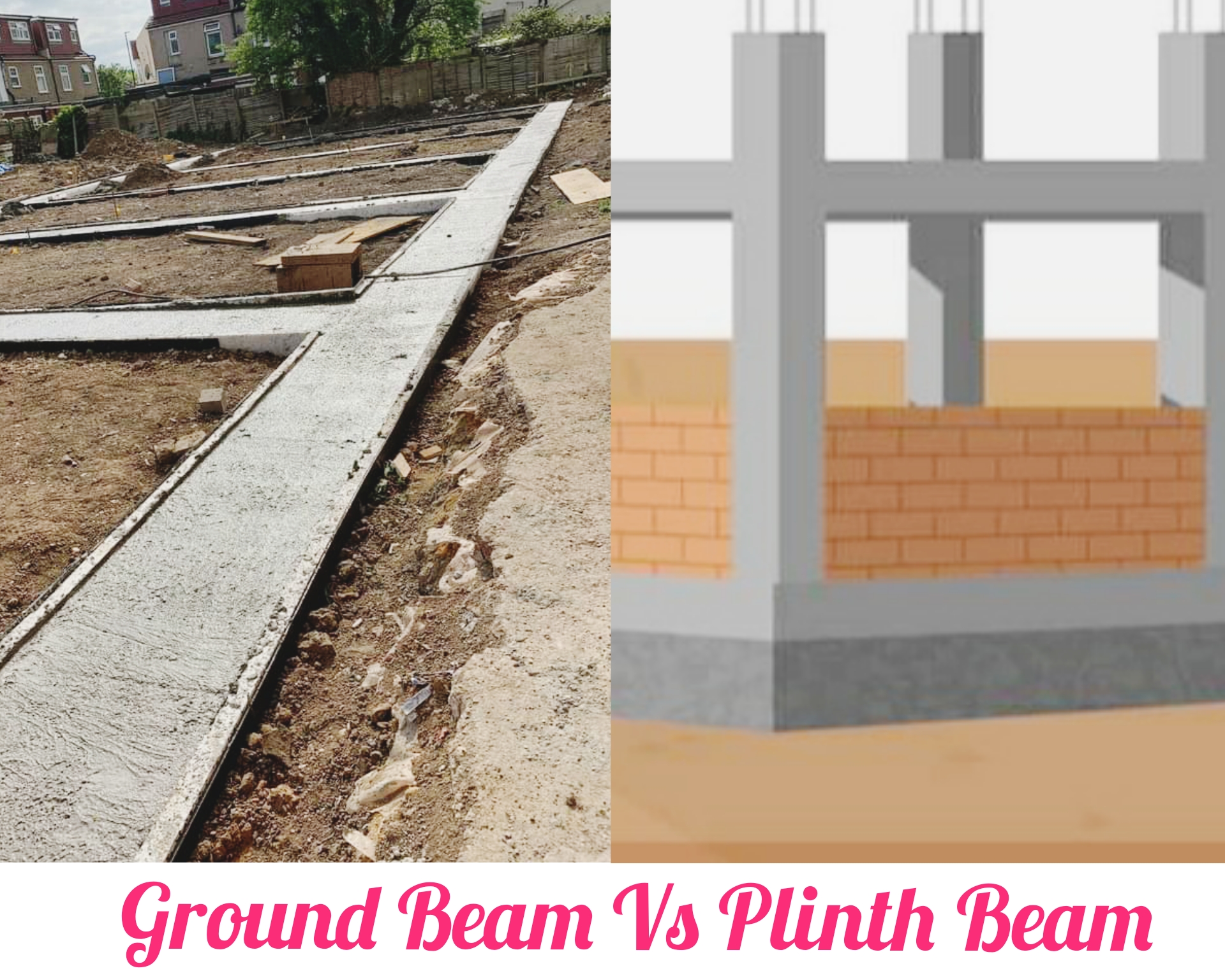In this article, I will discuss about the difference between ground beam and plinth beam. If you think that ground beam and plinth beam are one and the same, it is not.
Table of Contents
What Is Plinth Beam?
A plinth beam is a type of beam in a building structure placed at or above ground level and sometimes below it. Its main purpose is to handle the load of the walls built above it. Unlike most other beams, plinth beams primarily carry loads from walls, not slabs, which means they carry less weight.

Another advantage of plinth beams is that they indirectly help in reducing the length and slenderness of the columns. When you look at the ground floor of a building, you can see columns rising from the floor, although some columns may go even higher to balance the structure.
These beams are used for a number of reasons, such as preventing differential settlement, maintaining proper plinth plane, connecting all columns when the depth of the foundation is high, and avoiding construction difficulties with walls. Plinth beams play a vital role in providing stability and strength to the foundation and structure of a building.
What Is Ground Beam?
Ground beams, also known as grade beams, are horizontal structural elements made of reinforced concrete that are typically constructed at foundation level to support building walls, joists, and other load-bearing components.

They may be placed directly on the ground or sometimes supported by end pillars. These beams are specially employed in situations where the bearing capacity of the soil beneath the walls is poor, helping to distribute the load more evenly and preventing settlement problems.
One of the main advantages of using ground beams is their ability to be constructed quickly, providing a strong support system for the structure. By resisting the settlement of the supporting walls, they contribute to the overall stability of the building. Additionally, the pressure generated by ground beams may indirectly increase the bearing capacity of the underlying soil, thereby increasing their effectiveness in supporting the structure.
Ground Beam Vs Plinth Beam: Key Differences
| Aspect | Plinth Beam | Ground Beam |
|---|---|---|
| Location | Provided at ground level | Constructed at foundation level |
| Purpose | Binds the column, reduces column length and slenderness ratio | Supports walls or joists, prevents settlement |
| Load Carrying Capacity | Primarily carries self-weight and masonry load above it | Supports walls or joists, especially in poor soil subgrades |
| Material Composition | May not always be made of Reinforced Cement Concrete (RCC) | Mainly Reinforced Cement Concrete (RCC) |
| Stability | Provides additional stability against building settlements and earthquake damage | Increases overall bearing capacity indirectly |
| Connection | Connects all columns when foundation depth is high | Provides support to walls or joists |
| Role in Construction | Ensures proper plinth plane and avoids difficulties in wall construction | Prevents settlement of walls |

